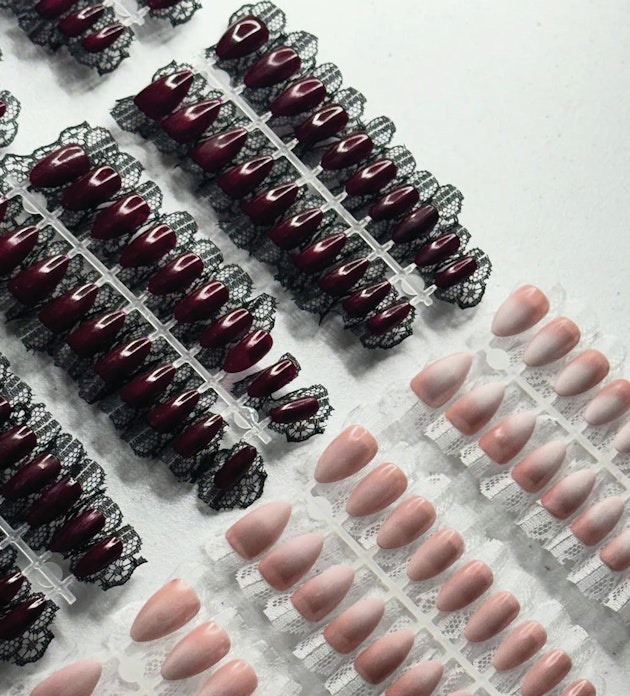
The history of nail colour & design: everything you need to know
By Lilly Delmage | 01 June 2025 | Feature, Technique

Nail colour and design have become one of the most popular outlets for creativity and self-expression within the beauty industry. But where did it all begin, and how has it evolved over time? Here’s Scratch‘s deep dive into the history of the industry…
1920s & 1930s
According to research revealed in Nail Style: Amazing designs by the world’s leading nail techs, a book written by Scratch’s editorial & partnerships director, Helena Biggs, it was make-up artist, Michelle Ménard, who was inspired to create nail polish as we know it. She had admired the high-gloss lacquer used on cars and collaborated with brothers, Charles and Martin Revson, and chemist, Charles Lachman, to create a hard-wearing nail enamel. This led to the launch of the first opaque nail polish in a bottle, under the Revlon brand.
Trend alert: the luna manicure
Manicurist, Beatrice Kaye, who worked for MGM Studios and tended to the nails of actors and actresses, created a design that swiftly became popular. It involved painting the nail, with the exception of the moon area and/or tips.

Portland-based nail artist, Andie of @nailor_moon, created this 1930s-inspired nail design for a client.
Trend alert: the French manicure
The timeless and sophisticated finish soared in popularity amongst fashionistas in France. Designed to resemble, yet enhance, the natural nail, it became a staple in nail styling.

Hertfordshire builder gel specialist, @by.tcj, shares a classic French manicure.
1940s & 1950s
The 1940s saw a rise in colour experimentation, with nail enthusiasts opting for hues beyond neutrals and reds. The decade also welcomed glue-on appliqués and fake nails. A revolutionary change was witnessed with the invention of acrylic sculpted nail extensions, widely attributed to dentist, Frederick Slack. In 1957, the dentist cut his nail at work and used aluminium foil and dental acrylic to fix it, inspiring the innovation.
Trend alert: matching lipstick & nail polish colours
The 1940s trend saw women matching their lipstick hues to their nail colours for a cohesive beauty look.

US-based nail pro, Aeshna of @thepolishedaffair, matches her bubblegum pink lipstick to her nail colour.
1960s & 1970s
Owing to the development of plastic nails, trend-conscious people could transform their natural nails into elegant, long-length talons. However, as noted in Nail Style: Amazing designs by the world’s leading nail techs, the adhesive glue used was not usually water-resistant, limiting the longevity of nail styles. This led to a higher dependence on nail professionals for enhancements, which catalysed the expansion of beauty salons and established the trade’s reputability.
The 21st century
The early 2000s saw what Helena Biggs considers ‘the nail art boom’ in Nail Style: Amazing designs by the world’s leading nail techs. Increased disposable income meant that pros could tailor services to suit clients’ needs and budgets, shifting adorned nails from a luxury to a must-have.
Trend alert: bold & daring designs
While initially met with hesitation, bold and non-conformist nail designs grew in popularity, overtaking minimalist styles. Their rise was facilitated by celebrity culture and nail technicians creating innovative and elaborate looks.

Nail pro, @beautybyles, shares a mix ‘n’ match nail art design.
The development of press-on nails
Press-on nails are a speedy option for session nail technicians working with time-poor clients. They offer a quick nail transformation for fashion shows and editorial photoshoots, where fast-paced and changeable work is essential.

@tylerphoenix_nails’ press-on nails for the AW25 Di Petsa show using The GelBottle Inc products.

Read the latest issue








